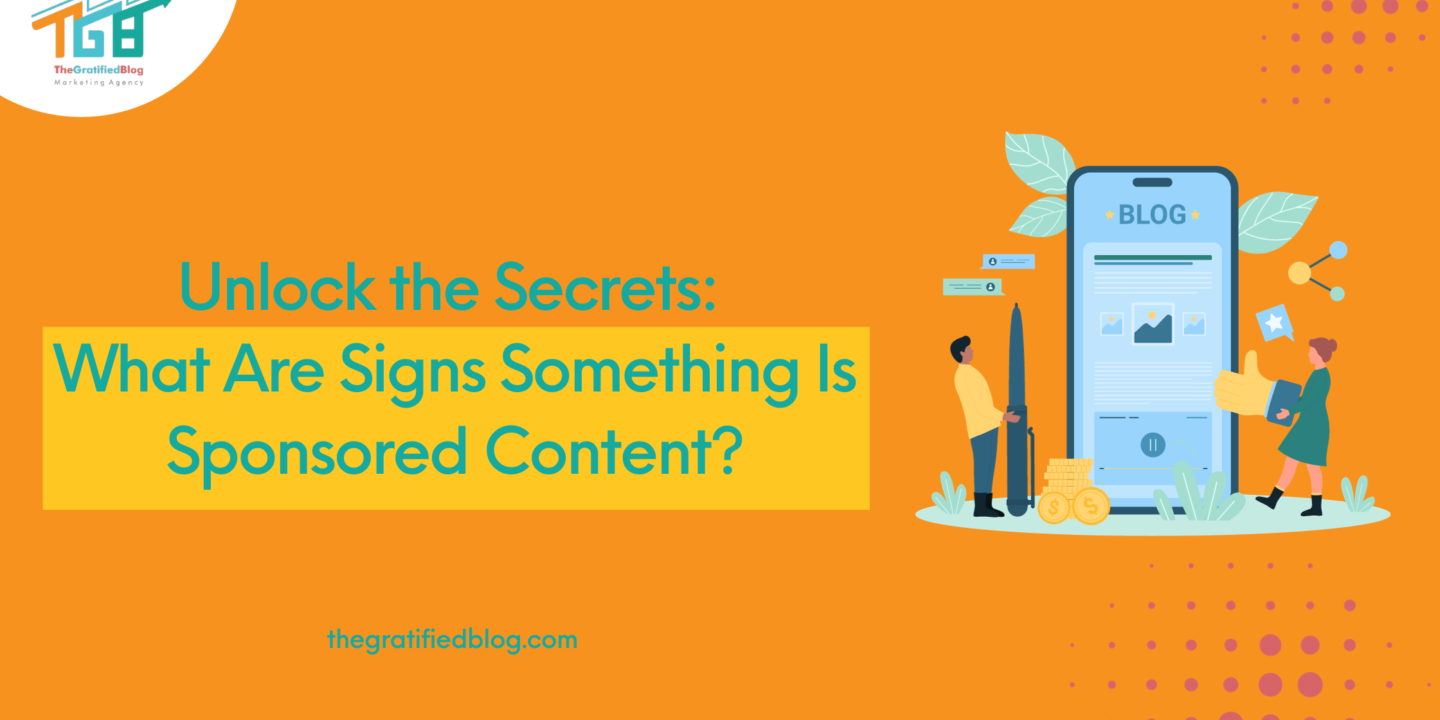
In the online world, there’s something you may notice called sponsored content. It’s like content that wears a disguise – it looks just like regular stuff you read or watch, but it’s trying to sell you something. So, how can you tell if something is sponsored content?
In today’s world of digital advertising, it’s getting harder to see the difference between honest content and stuff that’s trying to make you buy things. That’s why knowing the clues that can help you spot sponsored content is essential.
This guide is an extensive source of information for understanding “What Is Sponsored Content?”. It will take you through the various classifications of sponsored content, unveil the undeniable markers that indicate “What Are Signs Something Is Sponsored Content?”, acknowledge the significance of recognizing sponsored content, explore the ownership dynamics within sponsored content, evaluate the benefits it offers to the audience, delve into frequently asked questions (FAQs), and ultimately conclude with a reflective summary.
So, let’s get started;
What Is Sponsored Content?
Sponsored content is online material created to promote a product, service, or brand while blending in with regular content you might find online.
It’s like a chameleon of the digital world—it looks and feels like a regular article, video, or social media post, but its primary purpose is advertising something.
Brands or companies pay for creating and placing this content to engage and inform you while gently nudging you toward their offerings. It’s a way for businesses to communicate their message without feeling like traditional advertising.
What Are The Types Of Sponsored Content?
Indeed, there are several types of sponsored content. Let’s certainly dive into seven common varieties of sponsored content, each with its distinct features and objectives:
- Sponsored Articles: Sponsored articles are pieces of content that mimic the style and format of regular articles but are funded by a brand or company. They often appear on reputable news or media websites. A prime example is when you’re reading a news article, and it seems like a helpful, informative piece. Still, upon closer inspection, you notice it subtly promotes a particular product, service, or brand.
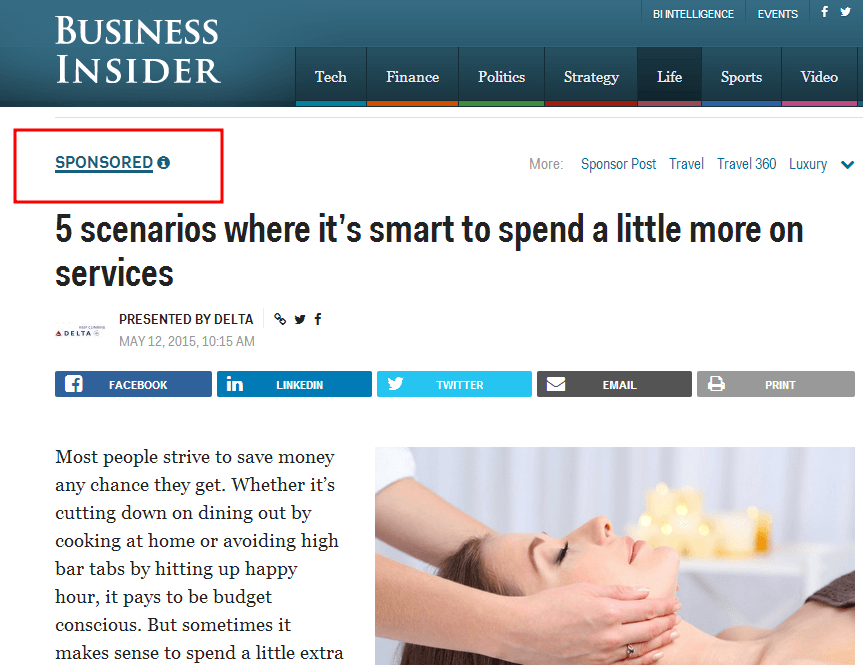
- Branded Videos and Infographics: Branded videos and infographics are visual forms of sponsored content. Companies create engaging videos or graphic illustrations that convey information while subtly promoting their offerings. These materials can be found on platforms like YouTube Instagram, or even embedded within articles.
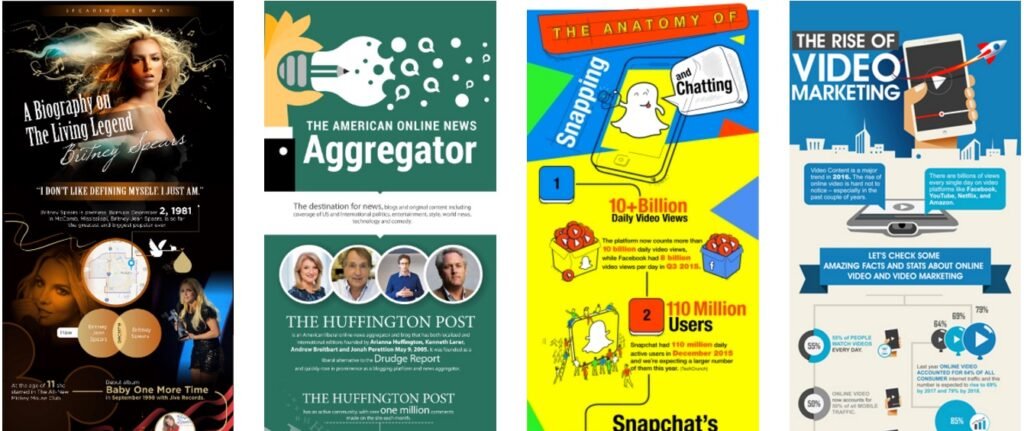
- Social Media Posts and Influencer Partnerships: Social media is a fertile ground for sponsored content. Influencers with a substantial following on platforms like Instagram, Twitter, or TikTok collaborate with brands to create content showcasing the product or service. While some include clear disclosures, others may need more to identify as sponsored, blurring the lines between genuine recommendations and paid promotions.
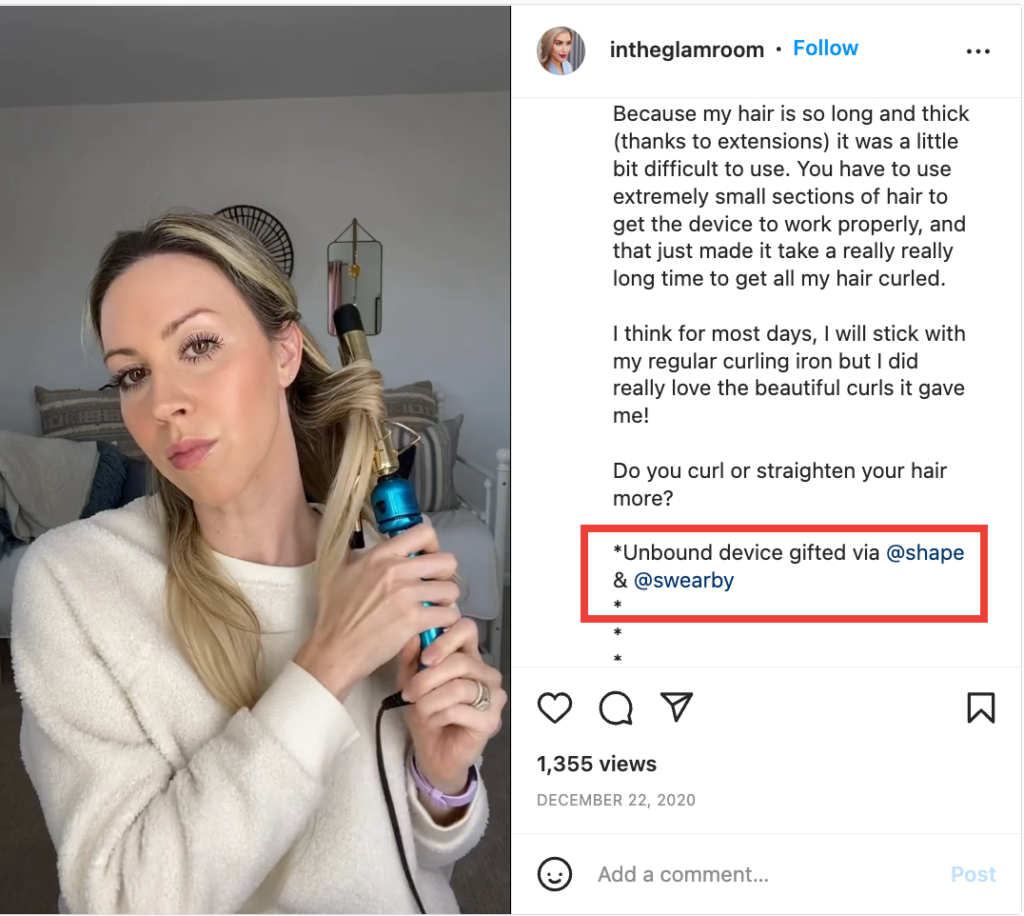
- Sponsored Podcasts: Podcasts have gained immense popularity, and sponsors have taken notice. In this format, sponsors often weave their messaging into the podcast’s content or provide a brief ad or mention at the beginning or during the show. While it may feel like a seamless part of the podcast, it’s essential to recognize these moments as sponsored segments.

- Email Newsletters: Email newsletters are a common form of sponsored content, particularly in digital marketing. Brands can sponsor a section or feature within a newsletter sent to a targeted audience. This allows them to reach potential customers directly in their inboxes. The sponsored content is usually clearly marked as such, but it blends with the newsletter’s overall design and content.
- Webinars and Online Events: Companies often host webinars, workshops, or events to engage with their audience and provide valuable insights. Sponsors can support these events, and in return, their brand is promoted during the event or in promotional materials. This type of sponsored content is prevalent in B2B industries.

- Product Reviews and Demos: Product reviews and demonstrations are a classic form of sponsored content, often found on blogs, YouTube channels, or dedicated review websites. Content creators or influencers receive products or compensation to review and showcase the sponsor’s offerings. The content is expected to be informative and authentic while highlighting the product’s benefits.
Now that we’ve covered the fundamental aspects of sponsored content, including its definition and various types, let’s focus on this blog’s central theme: what signs something is sponsored content?
What Are Signs Something Is Sponsored Content?

Identifying sponsored content can be akin to detective work in the digital landscape. Here are some key signs to look for:
- Disclosure Statements: One of the most straightforward indicators is the presence of a disclosure statement. Organizations like the Federal Trade Commission (FTC) mandate that sponsored content be transparent about its promotional nature. Look for phrases like “Sponsored,” “Paid Promotion,” or “Advertisement,” usually placed conspicuously at the beginning or top of an article. These declarations serve as a red flag, signaling that the content you’re about to consume is intended to persuade rather than inform.
- Prominent Brand Mentions: It often employs subtlety as a persuasive tactic. Instead of overtly promoting a brand or product, it integrates them seamlessly into the narrative. It can manifest as showcasing a particular brand as the ideal solution to a problem or highlighting its unique features. While these mentions may not scream “advertisement,” they reveal the content’s sponsorship when scrutinized closely. Keep an eye out for articles or videos where a brand is integral to the story, as this is often a telltale sign of sponsorship.
- Clear Calls To Action (CTAs): A clear call to action (CTA) is another breadcrumb that can lead you to sponsored content. CTAs are prompts that encourage the reader or viewer to take a specific action, such as making a purchase, signing up for a service, or visiting a website. While CTAs aren’t exclusive to sponsored content, their frequency and alignment with a brand’s objectives can indicate sponsorship. If an article or video is loaded with repetitive requests to buy a particular product or subscribe to a service, it’s likely the content is financially motivated.
- Unusual Praise And Positive Language: Sponsored content often exudes an aura of unwarranted optimism. It tends to shower lavish praise on a product or service, emphasizing its virtues while sidestepping critical insights. This overly optimistic language, sometimes bordering on hyperbole, can be a glaring sign that the content is not an impartial review but a carefully crafted promotion.
- Biased Or One-Sided Arguments: Another hallmark of sponsored content is its tendency to present a one-sided argument. It often avoids addressing potential drawbacks or alternative solutions and concentrates solely on the benefits of the promoted product or service. When you encounter content that appears to downplay any negative aspects or fails to provide a balanced perspective, it’s a strong indicator of sponsorship.
- Social Media Hashtags And Tags: On social media platforms, sponsored content typically leaves a digital footprint in specific hashtags or tags. Influencers and content creators are often contractually obligated to use terms like #sponsored or #ad when promoting a product or service. Additionally, they may tag the brand’s social media handles in their posts or videos. These digital markers are akin to neon signs, making it relatively easy to identify sponsored content within your social media feed.
- Using Third-Party Tools And Resources: In your quest to uncover sponsored content, you don’t have to go it alone. Browser extensions and online databases are designed to assist digital detectives in their mission. These tools can highlight content that contains tracking codes or tags associated with advertising partnerships. By harnessing the power of technology, you can efficiently identify sponsored content and separate it from the sea of information online.
By being vigilant and considering these signs collectively, you can better navigate the digital landscape and distinguish between authentic content and sponsored material. This discernment is crucial for making informed decisions as a consumer.
Why Is It Essential To Identify Sponsored Content?
Identifying sponsored content is essential for several critical reasons:
- Transparency: Recognizing sponsored content helps maintain transparency in digital media. When content is influenced by financial arrangements, readers and viewers have a right to know. Transparency builds trust between content creators and their audience.
- Consumer Trust: Trust is the foundation of any healthy relationship between consumers and content creators. Identifying sponsored content ensures readers and viewers can differentiate between unbiased information and promotional material, preserving their trust in the content source.
- Informed Decision-Making: People can approach content critically when they know it is sponsored. This awareness allows them to evaluate the information more discerningly, making informed decisions about the products or services being promoted.
- Avoiding Deception: Without clear identification, sponsored content can be deceptive. Consumers may unknowingly rely on biased information, potentially making choices that aren’t in their best interest. Identifying sponsorship prevents such deception.
Who Owns Sponsored Content?
The ownership of sponsored content can vary, but it typically involves a partnership between content creators and brands.
Here’s a breakdown:
- Content Creators: Content creators, including bloggers, vloggers, journalists, or influencers, are often responsible for creating the content. They write articles, produce videos, or host events that feature the sponsored message.
- Brands or Companies: Brands or companies possess the products or services being advertised, and they work in partnership with content creators. This collaboration involves offering financial support, products, or other rewards in return for showcasing their offerings within the content.
- Media Companies or Publishers: In some cases, media companies or publishers may own and produce sponsored content. These companies create content that aligns with their audience’s interests and then secure sponsors to fund the production.
Does Sponsored Content Provide Value To the Audience?
Sponsored content can provide value to the audience, but it depends on various factors:
- Relevance: High-quality sponsored content is relevant to the audience’s interests and needs. It can be valuable when it offers solutions, information, or entertainment that aligns with the audience’s needs.
- Quality: Well-executed sponsored content maintains the same quality as non-sponsored content. It can provide value if it’s well-researched, informative, and engaging.
- Transparency: Transparency about sponsorship is crucial. When the audience knows a piece of sponsored content, they can assess it with the appropriate level of scrutiny. Transparent sponsored content is more likely to provide value.
- Disclosure: How content creators disclose their partnerships may influence the audience’s perception of value. Transparent and honest disclosure enhances trust and, in turn, the perceived value.
- Objectivity: Sponsored content can be valuable if it maintains objectivity and provides a balanced view. It may lose value to the audience when it becomes overly promotional or biased.
FAQs
Q1: What is sponsored content?
A1: Sponsored content refers to online material in the form of articles, videos, or social media posts that are created and published with the explicit intention of promoting a specific product, service, or brand. It is typically compensated content where the content creator receives payment or other incentives in exchange for featuring the sponsor’s offerings.
Q2: Are all mentions of brands or products in content signs of sponsorship?
A2: Not necessarily. While mentions of brands or products can indicate sponsored content, they are not conclusive evidence. Genuine content may also discuss brands or products, but the key is to look for excessive or overly optimistic mentions that align with promotional objectives.
Q3: Can clear calls to action (CTAs) be found in non-sponsored content?
A3: Yes, CTAs can appear in both sponsored and non-sponsored content. However, in sponsored content, CTAs often align closely with the sponsor’s goals and may be more frequent and direct in encouraging actions like purchasing, signing up, or visiting a website.
Conclusion
Having gained a comprehensive understanding of sponsored content and its telltale signs through our exploration of “What Are Signs Something Is Sponsored Content?”—now is the time to harness the potential of sponsored content in your endeavors.
If you still have any questions related to this blog, then feel free to leave your questions in the comments section. We will be happy to answer you.
Thanks for reading 🙂






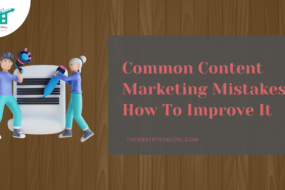

No Comments